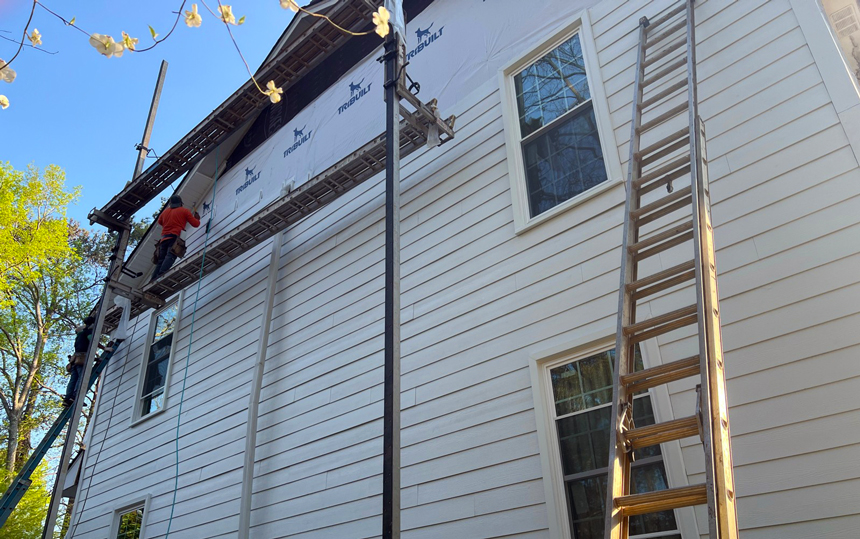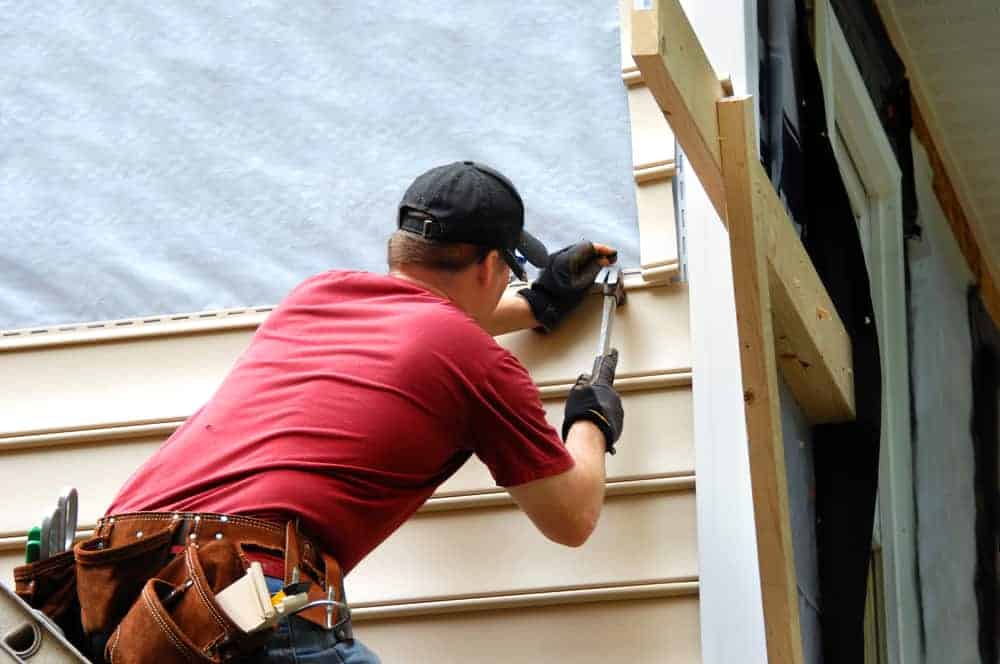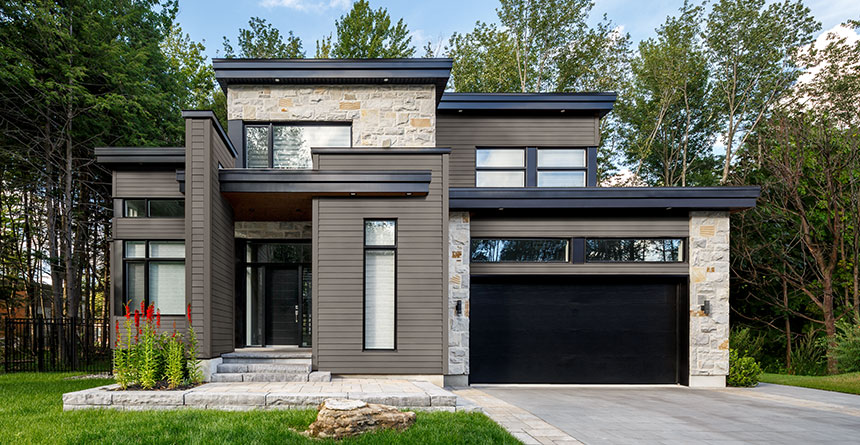Repair or Replace?
Making the Best Decision for Your Home’s Siding
Along with your roof and your windows, your siding is the first line of defense against mother nature. Over time, the constant exposure to the elements may cause your siding to warp or crack, compromising its ability to protect your home. When this happens, the question becomes: does it make more sense to repair the damage, or is it time for a complete siding replacement?
This article will offer some general guidelines for gauging how much life is left in your siding, and determining whether or not replacement is the best option.

Signs Your Siding Needs Attention
The good news about siding damage is it is usually pretty obvious! Wood and vinyl siding will both crack and warp as they age – reducing their ability to keep moisture from getting into your home. When you see evidence of cracking or warping, it’s important to act quickly as you don’t want to be dealing with water damage in addition to damaged siding.
In some cases, the damaged siding may not be easily visible – such as on second stories – and in these cases unfortunately water damage might be your first indication that something is wrong. Wood siding also can suffer from termite infestations. If you see signs of termites, it is essential to get your home inspected by a pest control professional as these wood-eating critters can quickly wreak havoc on wood siding and framing.
- Hollowed or Eaten Wood: Termites feed on wood, so a common sign of an infestation is wood that sounds hollow when tapped or wood that appears to be eaten away.
- Mud Tubes: Subterranean termites build tunnels made of mud to travel between the soil and their food source. You may notice these mud tubes on or near the exterior siding, especially close to the ground.
- Visible Termites: Swarming termites or discarded wings near windows and doors can be an indication of a termite infestation. Although this may not be directly on the siding, it’s a sign you shouldn’t ignore.
- Blistering or Uneven Surfaces: Some types of termites consume the wood from the inside, making the outer wood surface appear blistered or uneven. If you see this on your siding, it’s worth investigating further.
When Siding Repair Makes Sense
In general, repairs make more sense when the damage is minor, or isolated. Once the damage has become severe or widespread, you will find yourself playing whack-a-mole with your repairs. This is time consuming and can quickly become very expensive.
Additionally, it is difficult for repairs to perfectly match the older siding – particularly with vinyl – so you may see your home’s curb appeal take a hit. If you are trying to sell your home, know that prospective buyers will not look at recent repairs as a boon – but rather as a sign that the siding needs to be replaced soon! In some cases, the damage to your siding may have a clear cause – like damaged or overflowing gutters. After the problem is resolved, damaged siding can be safely replaced and still provide its expected lifespan.

Indicators That It’s Time to Replace Your Siding
If you find yourself repairing your siding every year, it’s time to replace it! Repair costs quickly add up and if your siding was in good condition it wouldn’t need frequent repairs. Even if your siding is still within its normal lifespan, you might consider replacing it if you don’t care for its looks. Modern siding options run the gamut from mild to wild – and you can completely transform your home’s look with new siding.
Keep in mind that while new siding may be more costly than repairs upfront, increased energy efficiency means you’ll save money on your power bills each month.
Factors to Consider
Material of the Siding
The type of siding you have will play a role in determining when it is time to replace it. Vinyl siding tends to oxidize and turn brittle as it ages. Once it has begun to crack in one place, it is almost certainly going to begin to crumble in other places.
Wood siding on the other hand may be a better candidate for repairs – as the condition of the siding will vary with its exposure to sun and rain.
Budget and Investment
Siding projects are expensive, and sometimes complete replacements simply aren’t an option. It is better to repair damaged siding and avoid water damage, mold, and mildew, rather than let the problem sit untreated.
Don’t compromise the integrity of your home just because your old siding needs to be replaced and the money for a full replacement isn’t available.

Future Plans
Your home’s siding plays a major role in its resale value and so you should ask yourself how long you’re planning on staying in your home.
While replacing your siding before you put your home up for sale will certainly increase the value of your home, you might be able to simply sell your home for slightly less and let the new homeowner take responsibility for the siding installation. Talk with your real estate agent and see what the local market conditions are like in your area. If you’re planning on staying in your home for a while – your best bet is to choose a high quality siding material. Siding options like James Hardie’s fiber cement siding have lengthy warranties and are extremely low maintenance. You’ll get to enjoy all the benefits of brand new and great looking siding for years to come!
Consulting with Professionals
Still not sure if your siding needs to be replaced? Professional siding contractors can assess the extent of the damage and provide you with quotes for both repairs and replacements. Keep in mind that replacement costs only need to be paid once, while older siding will require constant upkeep.
To Repair or Not To Repair? That Is the Question!
Repairs are ultimately a band-aid, but sometimes a band-aid is all you need. However, if the problem is that your siding is old, any repairs are going to be short lived as the unreplaced sections show their age.
When in doubt, consult with a trusted local siding contractor and see what they recommend. You may be pleasantly surprised to find that replacing your siding ultimately saves you money when compared with frequent repairs and the possibility of expensive water damage!
